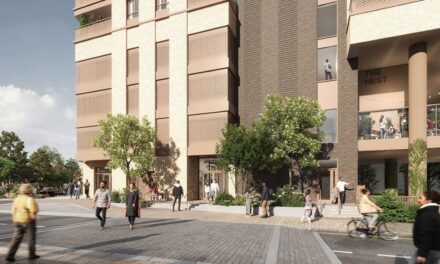According to Knight Frank’s latest London New Homes Report analysis, London’s housing market is seeing a much-needed boost as developers respond to the relaxation of space restrictions for permitted development.
Since the government removed the 1,500 square metre cap on commercial-to-residential conversions in March, applications to convert large offices into residential flats have surged. New data by Knight Frank shows 1,875 homes have been proposed in the last six months, marking the first significant wave of applications since 2021. This represents a nearly 20 per cent increase over pre-pandemic levels, where 1,600 homes were proposed in the same six-month period in 2019.
Abigail Heyworth, a partner in development strategy and finance at Knight Frank, commented on the impact of these changes: “The lifting of the size cap on office-to-residential conversions has opened up new opportunities for developers. It enables the industry to make better use of underutilised office spaces and helps to mitigate the risk of stranded assets in the capital. London has faced a persistent housing shortage over the years, so the relaxation of area thresholds is helping to close that gap.”
The removal of the space cap has resulted in various large schemes emerging across 12 London boroughs. Notable projects include Hounslow, where four applications exceeding 100 units have been filed, including converting a Dell EMC office into 206 flats and transforming two towers of Great West House into 263 flats. In Croydon, major proposals include converting the “50p Building” into 250 flats and The Landsdowne Building into 118 flats. Additionally, in central London, One Bessborough Gardens, formerly an MI5 spy school, will be converted into 53 homes by Firethorn Trust.
Knight Frank states that the encouraging rise in applications to convert commercial spaces into new homes offers a potential boost to the housing supply when London’s housing delivery is slowing. According to the firm’s analysis of council planning websites and Molior London, annual housing delivery in the capital has dropped to 35,000 homes, a 10% decline compared to the previous year. This falls significantly short of the London Plan’s target of 52,300 homes.
Stuart Baillie, head of planning at Knight Frank, commented: “It is clear that the removal of the size cap on residential conversions via PDR has led to proposals for almost 2,000 new homes. This remains only a small fraction of London’s growing housing need. Under the government’s revised National Planning Policy Framework, the London Mayor is now tasked with delivering 80,000 homes per year to address the ongoing shortfall. Finding sufficient land to get anywhere near these numbers is going to be extremely challenging. Conversion of redundant commercial properties is surely part of the answer.”
Knight Frank reveals that since March, several applications to convert large commercial premises into residential flats have been refused, blocking approximately 300 potential homes.
Anna Ward, associate in Residential Development Research at Knight Frank, said: “Our latest analysis shows that the removal of the 1,500-square-metre cap on office-to-residential conversions is already driving an increase in applications to convert commercial spaces into homes in some areas of London. This is a welcome boost, especially since housing delivery in the city continues to fall far behind targets.
“However, while nearly 2,000 homes have been proposed, already several applications have been refused on grounds including unacceptable highway impact and failure to provide fire safety information. Additionally, some London councils are looking at measures to limit conversions, creating a narrow window for developers and landlords to navigate the ‘prior approval’ process, which typically takes at least two months.”
© London West (powered by ukpropertyforums.com).
Sign up to receive our weekly free journal, The Forum here.















